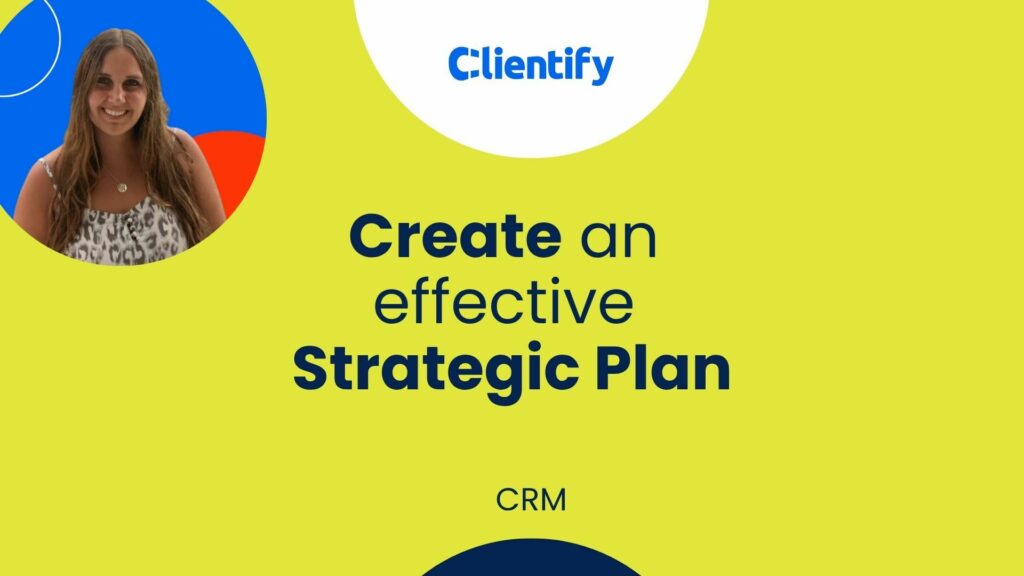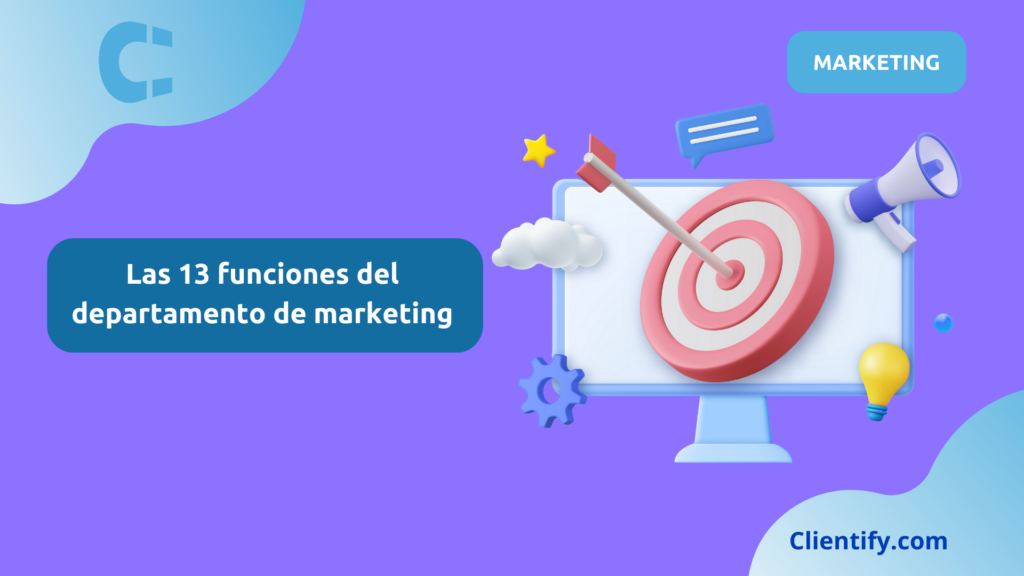Why do some companies make steady progress and others stagnate? The difference usually lies in having (or not having) a good strategic plan.
It is not a long and forgotten document, but a clear roadmap that helps you make meaningful decisions and move towards your goals.
In this post we show you how to create an effective one: with real examples, clear steps and practical tools. You don’t need to be a business expert or hire a consulting firm.
Just understand your starting point, define well where you want to go… and follow the path with focus, team and data.
A strategic plan is the compass that sets the course of your business. It is not a long and boring document, it is a key tool to decide where you want to go and how you are going to get there.
Throughout this content you will find practical advice, real-world examples and tools that you can start applying today.
- You will discover exactly what a strategic plan is and why it is so important.
- You will learn the key elements that must be included in any strategic planning.
- You will see the benefits it can bring to your company in the short and long term.
- We will guide you step by step in the elaboration of your own strategic plan.
- We will share real examples and useful tools that will make the process easier.
- And as always, we invite you to try it with us.
What is a strategic plan?
A strategic plan is a roadmap that defines where a company is going and how it will get there.
It helps to visualize the future of the business, taking into account its current situation, available resources and the environment in which it operates.
Its main objective is to align daily actions with long-term goals, thus maximizing the effectiveness of each decision.
This tool is not exclusive to large corporations. Any organization, be it a startup, an SME or a digital marketing agency, can and should have solid strategic planning.
In fact, sectors such as education, healthcare or e-commerce (many of our clients) are increasingly turning to this type of planning to make smarter decisions and anticipate market changes.
To help you visualize it better, here is a practical example of strategy: an agency that wants to double its clients in a year and must consider what kind of services it will offer, how it will communicate them, what resources it needs and how it will measure its success.
Without this clear vision, any action will be a shot in the dark.
Manage everything from one place: engage, automate and sell with AI
Forget loose tools, centralize communications, sales and marketing with Clientify.
Activate your 14-day free trial and scale without complicating your life.
Key elements of a strategic plan
An effective strategic plan is not an endless list of nice ideas or founder’s sparks.
It is a structured document that contains key components to guide the company’s decisions and actions that allow you to transform your vision into concrete results. Here you have the essential pillars that any strategic planning must have:
- Mission: defines the purpose of the company. It answers the question “why we exist“.
- Vision: projects where the organization wants to go in the future.
- Values: are the principles that guide the team’s behavior and business decisions.
- SWOT analysis: study the strengths, opportunities, weaknesses and threats to define a realistic starting point.
- Strategic objectives are specific and measurable goals to be achieved in the medium and long term.
- Strategies: the general actions to be carried out to meet the objectives.
- Action plan: defines tasks, responsible parties, time and resources needed to execute each strategy.
- Evaluation and monitoring: establish key indicators to measure progress and make adjustments along the way.
A trick? Don’t complicate things.
The key is to build a plan that your team understands and can execute. And take as much time as you need to be clear about it, if you don’t buy into it or understand it then your team won’t improve it.
If you need a more complete guide, take a look at our marketing strategy manual, which also applies to this planning.
Benefits of implementing a strategic plan
Having a well-defined strategic plan is like having a map on a journey: it saves you time, avoids unnecessary detours and gets you closer to your destination with more security. It saves you from calling the Cuñao to get you out of a rut.
But what concrete benefits does it bring to a company?
Here is a table with the most relevant impacts:
| Benefit | Impact on the company |
| Clear direction | All teams know where they need to go and why. |
| Improved decision making | Making decisions based on data and objectives reduces errors and risks. |
| Resource optimization | Unnecessary investments are avoided and the actions that generate the most value are prioritized. |
| Increased adaptability | It allows to better respond to changes in the environment with flexible plans. |
| Improved performance | The company is growing steadily because it knows what is working. |
In short, implementing a strategic plan allows you to work with focus and not at random.
And if you are still hesitating, we leave you with this quote from Peter Drucker, management guru: “What can’t be measured, can’t be improved”; a classic. At Clientify we know this well: that’s why many of our features help you analyze, measure and make data-driven decisions.
Steps to develop a strategic plan
Creating a strategic plan doesn’t have to be a headache. If you follow a clear, step-by-step process, it is much simpler than it seems. Here is a practical guide that you can adapt according to your company’s needs:
1. Analysis of the current situation: assess where you are now. What is working? What needs improvement? Market research can help you better understand the environment and the competition.
2. Definition of mission, vision and values: establish the basis of your business identity.
3. SWOT analysis (again): identify your strengths, weaknesses, opportunities and threats. This will give you a clear vision to draw realistic strategies.
4. Setting objectives: define SMART goals: specific, measurable, achievable, relevant and time-bound.
5. Strategy formulation: What will you do to achieve these objectives? This is where the main lines of action are defined.
6. Creation of the action plan: it details what tasks are to be executed, who will do them, when and with what resources.
7. Implementation: put the plan into action with your entire team aligned. If each team has its own incentives, pray to the gods because it won’t work.
8. Evaluation and adjustments: measure results with key performance indicators (KPI’s) and adjust as necessary.
Advice from professional friends: follow-up is as important as planning.
A plan that is not reviewed and measured remains a dead letter. Use analysis and reporting tools to monitor progress and make continuous improvements.
In this, also from Clientify, we help you with a set of Dashboards and Reports that Drucker would be proud of.
Useful tools for strategic planning
Today, technology can be your best ally when it comes to planning. There are numerous tools that facilitate the design, monitoring and adjustment of a strategic plan. Here are some of the most recommended ones:
- Clientify: our platform allows you to create and manage marketing, sales and CRM strategies from a single place. Ideal to have control of all the key processes of your business.
- Trello: useful for organizing tasks in the action plan, assigning responsibilities and visualizing the progress of projects.
- Canva: perfect to visually design strategic maps or dashboards in a simple way.
- Google Workspace: documents, spreadsheets and forms to collaborate in real time with the whole team.
- Power BI: analysis platform that allows you to measure results, create dashboards and identify trends.
And if you want to take it to the next level, you can explore the functionality of strategic alliances or review how to use advertising strategy tools to support your planning.
Examples of Strategic Plans in Business Sectors
Theory is one thing, but putting it into practice is quite another. Therefore, to help you understand how to apply a strategic plan in different sectors, we share concrete examples with you.
You will see how each type of company adapts planning to its reality, resources and objectives.
Education and training
Imagine an academy that offers online courses and wants to position itself as a benchmark in digital transformation. Its strategic planning would include:
- Objective: to increase enrollment in digital transformation courses by 30%, for example, in 12 months.
- Strategy: create an educational marketing campaign focused on student success stories.
- Actions: free webinars, publications in social networks, and alliances with technology companies.
- Evaluation: measure, measure, and measure indicators such as enrollment, retention and student satisfaction rates.
In addition, this company could benefit from integrating its CRM with learning platforms and using tools such as digital strategy manuals to optimize its communication.
A 2-for-1, wow
Industry and manufacturing
A company that manufactures agricultural machinery wants to expand into new Latin American markets. Its strategic plan includes goals such as:
- Objective: to enter 3 new countries with local distributors in one year.
- Strategy: create strategic alliances with commercial representatives in each country. This part needs to be studied but it pays off.
- Actions: market analysis, product adaptation to local regulations and regionalized campaigns.
- Tracking: sales measurement, number of active distributors and end-customer feedback.
Good strategic planning in this sector must include logistical variables, technical regulations and long-term projections, supported by analytical tools that enable good management of the commercial relationship.
E-commerce
In the eCommerce sector, a strategic plan can make the difference between survival and growth. Suppose you have an online store selling eco-sustainable products. Your planning could include:
- Objective: to increase recurring sales by 50% through loyalty within 6 months.
- Strategy: create a points system for repurchase and personalized campaigns by email and WhatsApp.
- Actions: post-sales email automation, remarketing, satisfaction surveys and site UX improvements.
- Metrics: and always measure conversion rate, purchase frequency, email open rate and customer feedback.
In this case, using well-defined digital advertising strategies is essential to attract qualified traffic and scale the business. And let’s not forget abandoned cart automations, for example.
IT, telecommunications and software
A cloud or SaaS software company has a constant need to innovate. Its strategic plan will focus on both development and customer acquisition:
- Objective: to launch a new functionality with commercial impact in less than 6 months.
- Strategy: apply agile methodologies and strengthen the link with the marketing team to communicate the benefits.
- Actions: work in development sprint format, testing with real users, validation surveys and launch campaigns.
- Evaluation: a keen eye on the adoption rate of the new functionality, user retention and much attention to the reduction of Churn (or abandonment).
This type of company can enhance its strategy by integrating customer service channels with CRM, as detailed in the article on business strategy.
Marketing agencies
A marketing agency needs not only to attract clients, but also to establish itself as a strategic partner. An example of your strategic planning could be:
- Objective: generate 20 new qualified leads per month through inbound marketing.
- Strategy: create a blog with useful and SEO optimized content, with CTAs to free queries (like this one, heh).
- Actions: weekly content publication, LinkedIn campaigns, TOFU-MOFU-BOFU funnels.
- Tracking of…: conversions by channel, average time on site, and lead quality.
In this case, having a solution like Clientify to automate flows, manage content and qualify leads can be the best ally to achieve your goals.
Travel Agencies
A tourism business is driven by seasons, emotions and experiences. A strategic plan allows them to anticipate demand and build loyalty. For example:
- Objective: to increase the sale of exclusive packages for the low season.
- Strategy: segment by customer behavior and design personalized experiences.
- Actions: email marketing, network campaigns and alliances with industry influencers.
- Metrics: be aware of bookings made, interactions in campaigns and cost per acquisition.
The key is to understand user behavior, something you can easily achieve with a well-configured CRM.
Health, beauty and wellness
A beauty salon that wants to build customer loyalty and launch new services can structure its strategic planning as follows:
- Objective: to increase repeat appointments of regular customers by 40%.
- Strategy: create a rewards program and automate personalized reminders.
- Actions: post-service surveys, monthly promotions and satisfaction surveys.
- Evaluation: do not fail to measure the frequency of appointments, the average duration as a client, and the NPS satisfaction that gives so many afternoons of glory.
Professional Services
A law firm or consulting firm also needs strategy. A plan can focus on strengthening the trust of its clients:
- Objective: to increase customer loyalty by 25% through added value.
- Strategy: generate valuable content via newsletter and offer free quarterly consultancies.
- Actions: create a legal blog, long or short video capsules, downloadable content and facilitate case tracking.
- Tracking: You need to keep track of your email open rate, the return of old customers and referrals generated (how many inbound links to your website you receive).
In this type of sector, strategic planning helps to position the business based on trust, transparency and effective communication.
Common mistakes when developing a strategic plan
Let’s cut to the chase: a bad strategic plan can be worse than no plan at all.
And the worst thing is that many of the mistakes are repeated in all companies, from the smallest to the largest corporations. Here are the most frequent mistakes and how you can avoid them:
- Not defining clear objectives: if you don’t know where you are going, any road seems the right one. Objectives must be specific, measurable and aligned with the business vision.
- Lack of customization: copying and pasting models from others does not work. Each company has its own reality and its strategy must be unique. Like the editorial tone, for example.
- Generic answers: using empty phrases such as “we want to grow” does not work. It is better to talk about how and with what resources you are going to do it. Always go into detail.
- Ignoring the environment: not analyzing the market, competitors or trends can make you lose focus. Up-to-date market research is key.
- Poor design of the strategic conversation: if the team does not understand the plan, they will not execute it, forget it. Use clear and down-to-earth language, without scary words, even if we have thrown some of them at you in this text.
- Not testing before launch: as with any strategy, testing is part of success. Follow-up and adaptability should be included from the beginning.
If you don’t know how to test, start with a small investment in campaigns, for example, and see how they work. - Lack of follow-up: creating the plan and forgetting about it is a classic mistake. The strategy must live and evolve.
Avoiding these mistakes will allow you to build a solid, realistic planning focused on tangible results. And as we always say at Clientify: less theory, more action (and analysis, of course).
You have your Strategic Plan, now what?
A well-developed strategic plan is not just a management tool: it is a statement of intent.
It’s what differentiates a company that improvises from one that moves forward with steady steps. Whether you’re an SME, a startup or a growing agency, you need strategic planning to lead the way and help you adapt without losing your way.
We have seen what a plan is, how to build it, what tools you can use, real examples and mistakes to avoid.
Now, the ball is in your court. Take what you have learned and start applying it. Step by step, objective by objective. And if you need help implementing it in your marketing, sales or CRM, you know where we are.
Do you want to take a look to see how we can help you? Try it for free for 14 days with no obligation and see.
And even if you don’t want to roll up your sleeves too much , you can request a customized implementation of your Clientify Plan.




